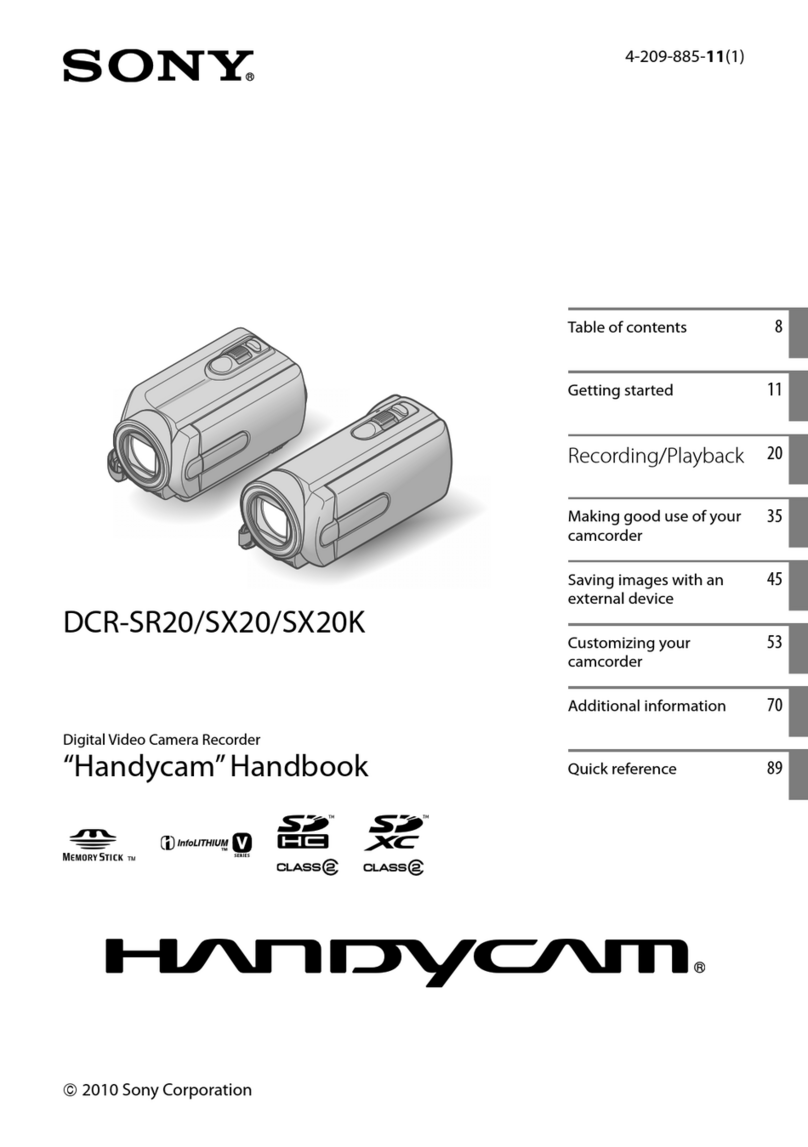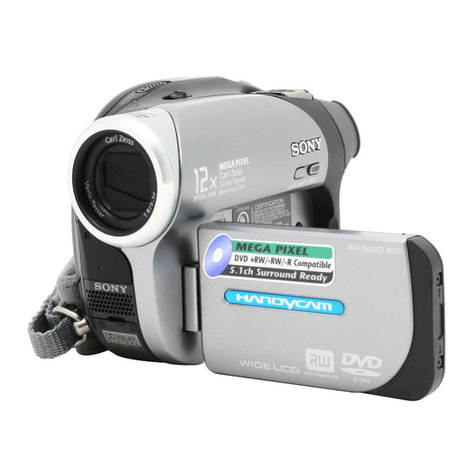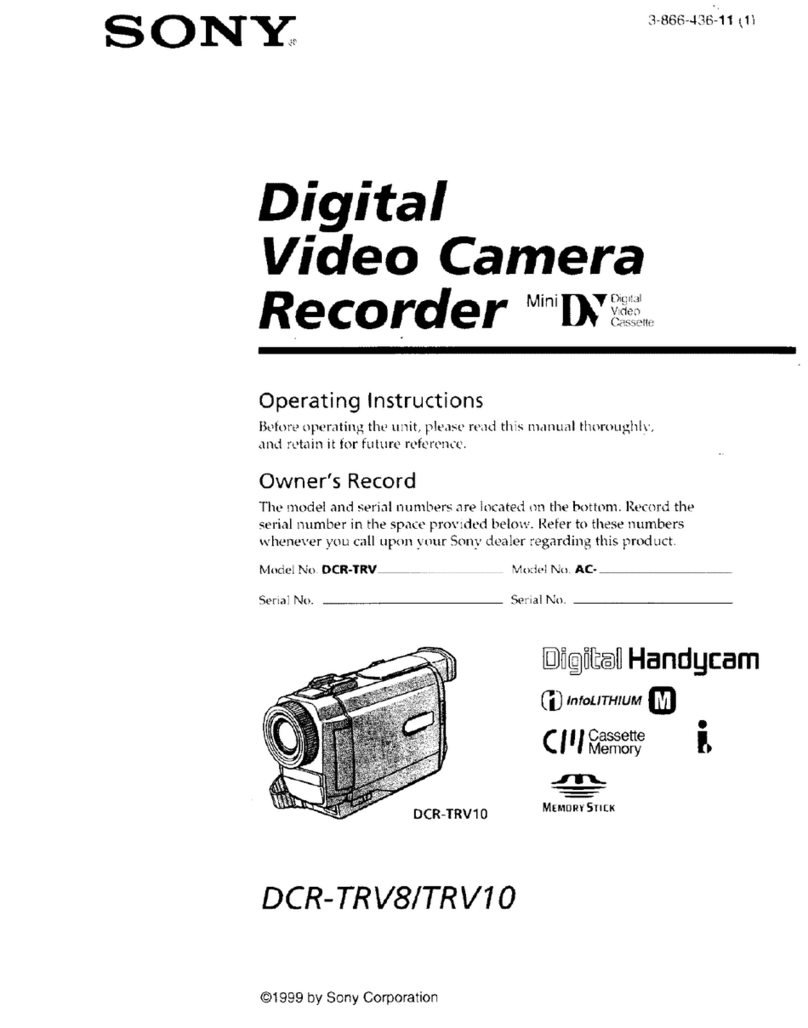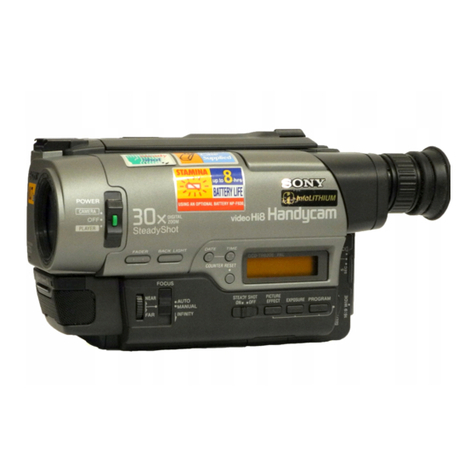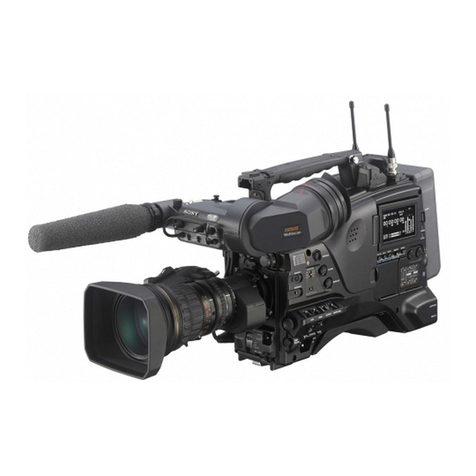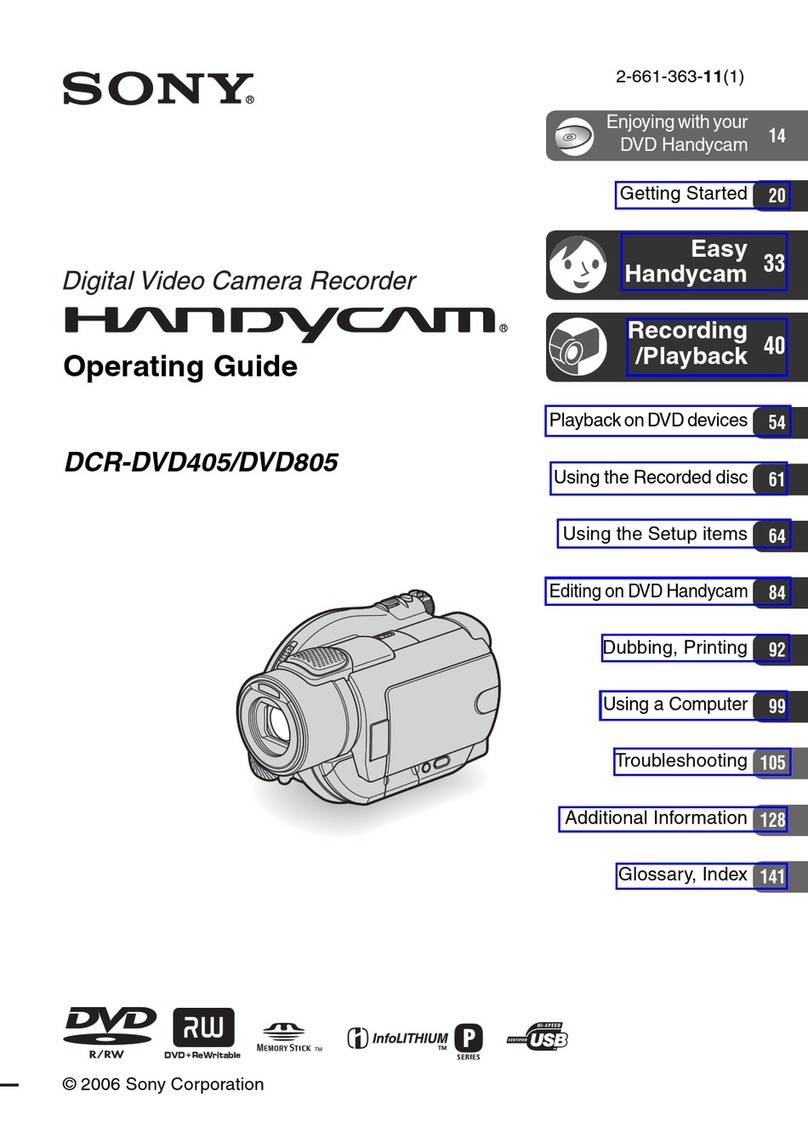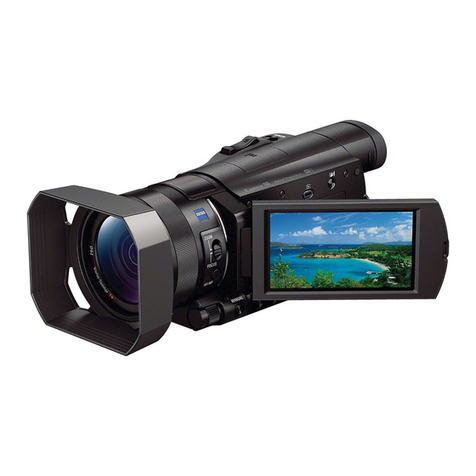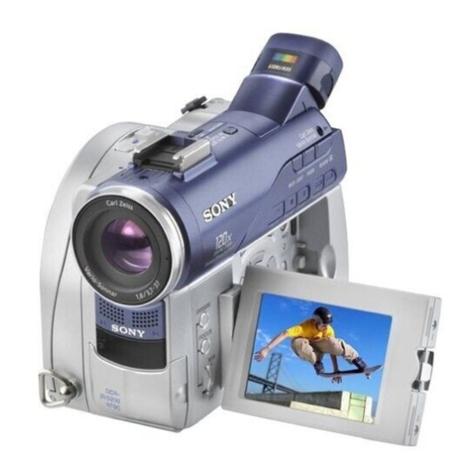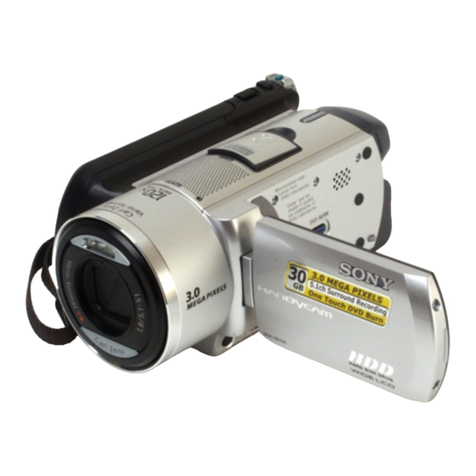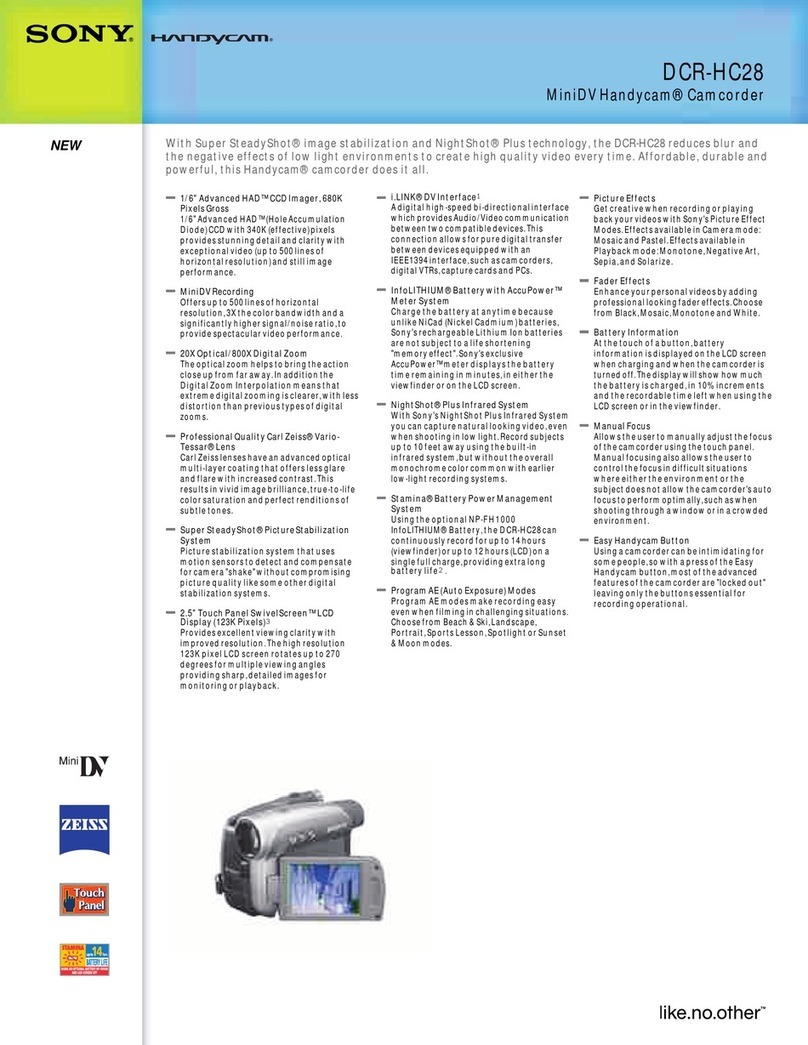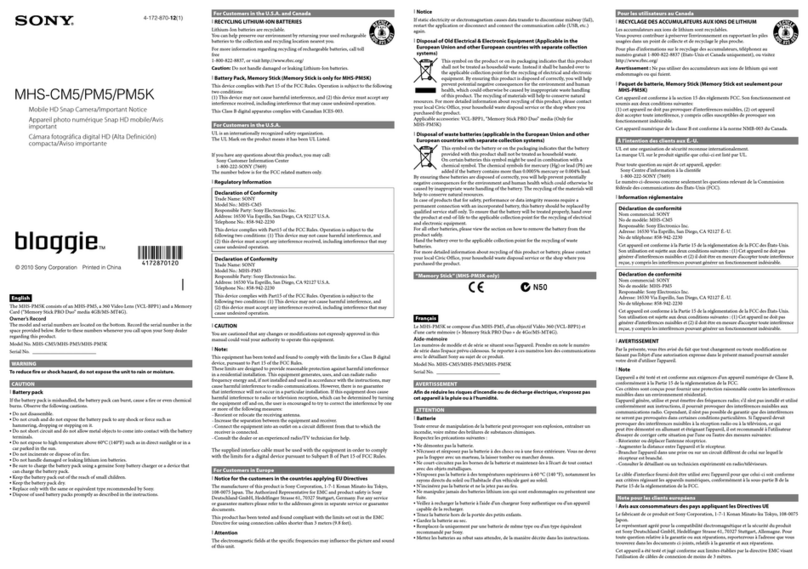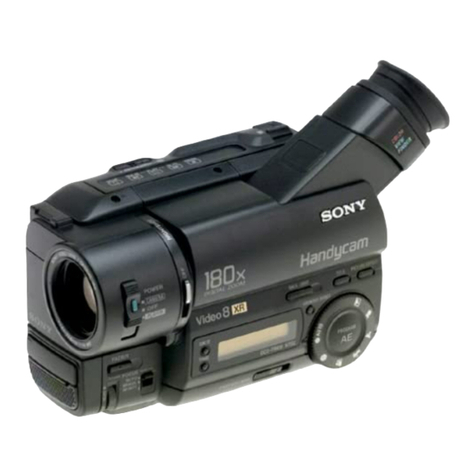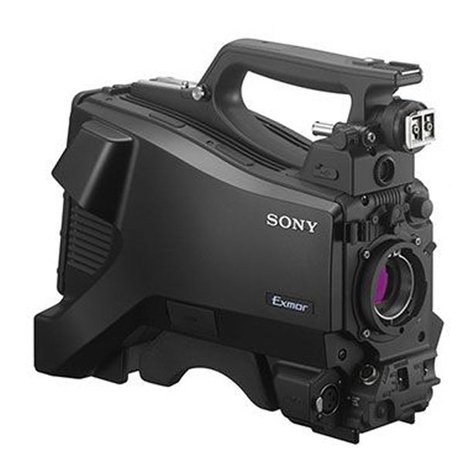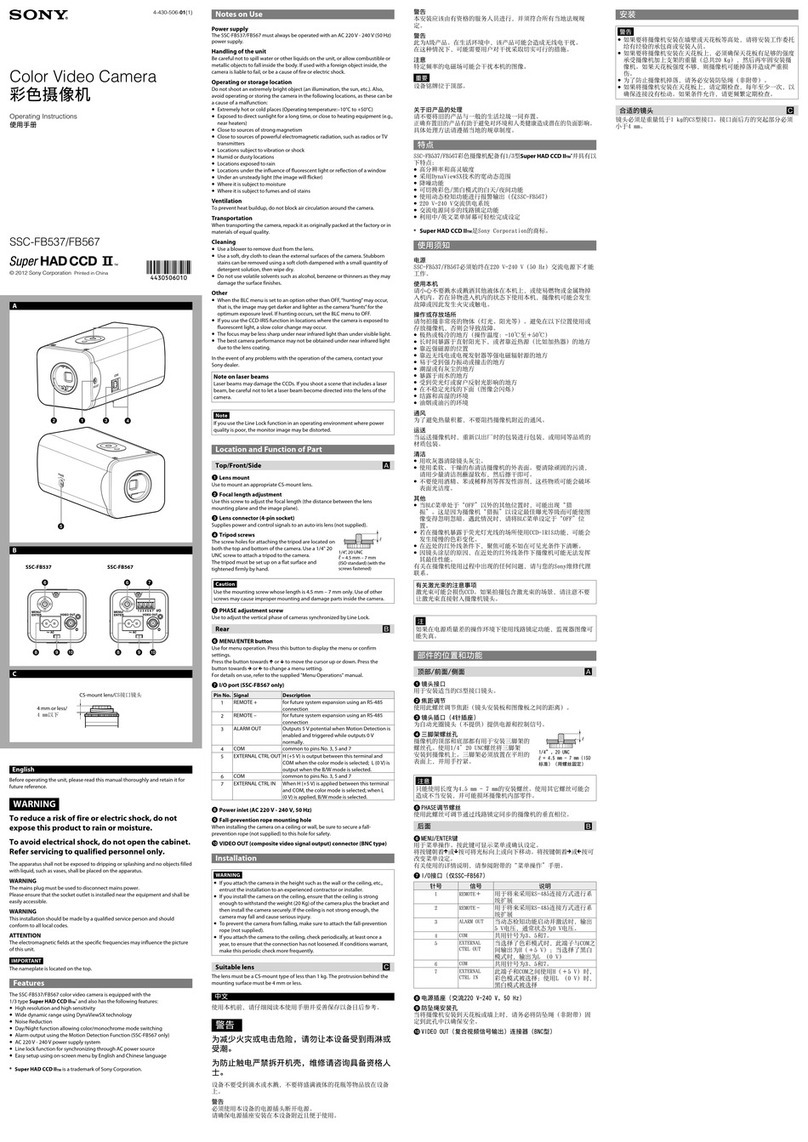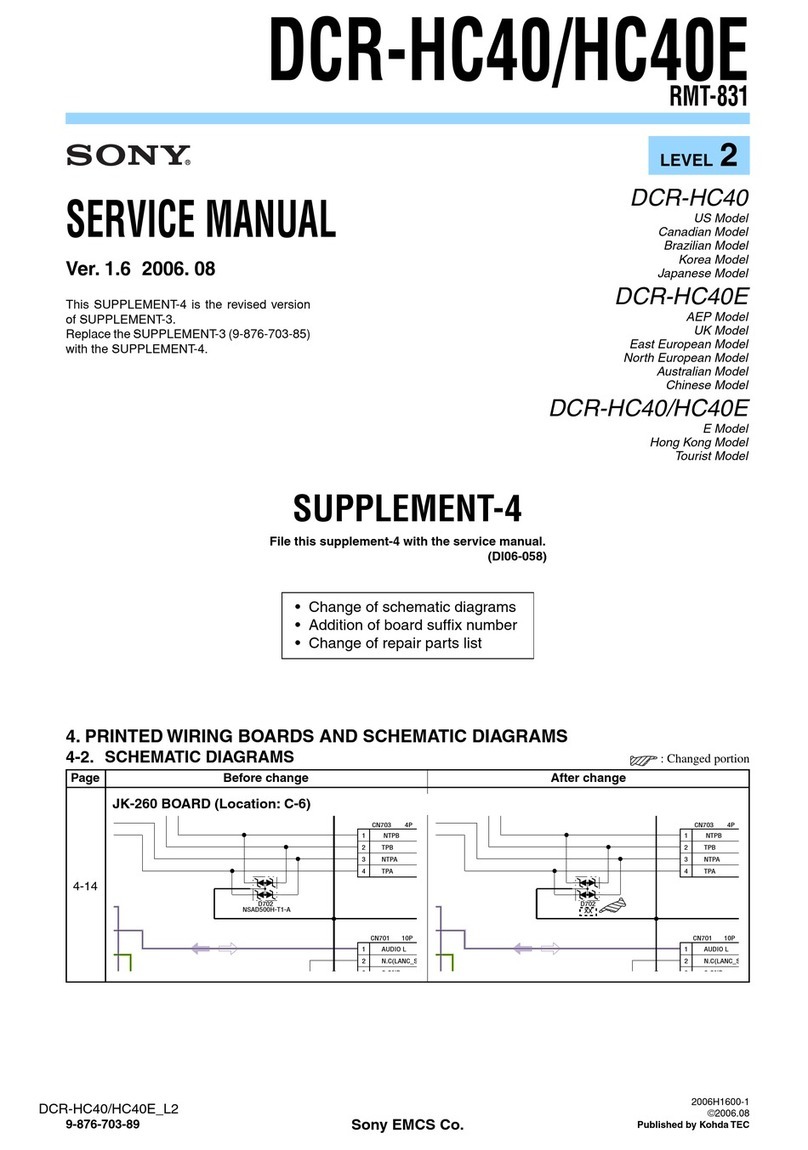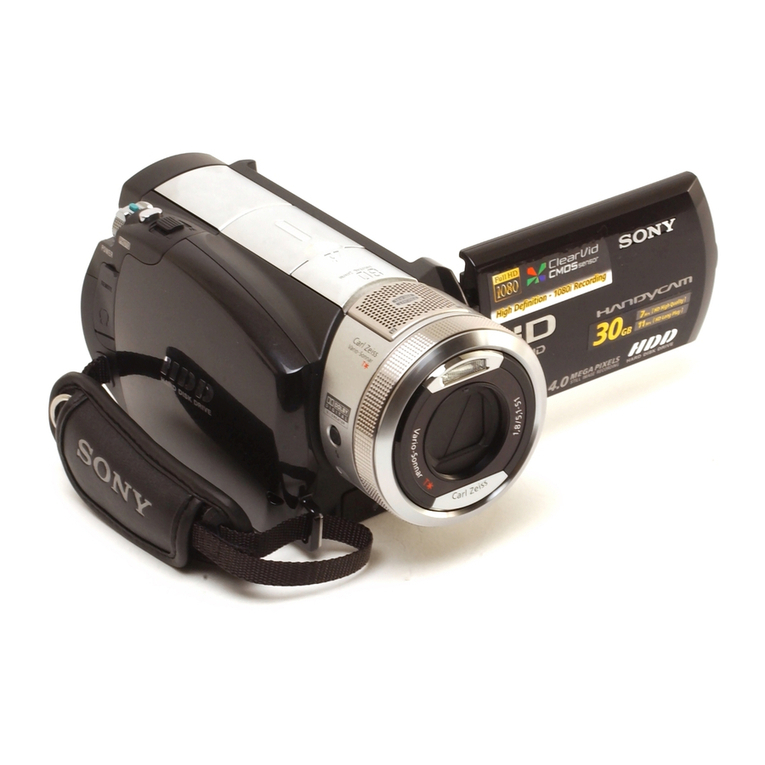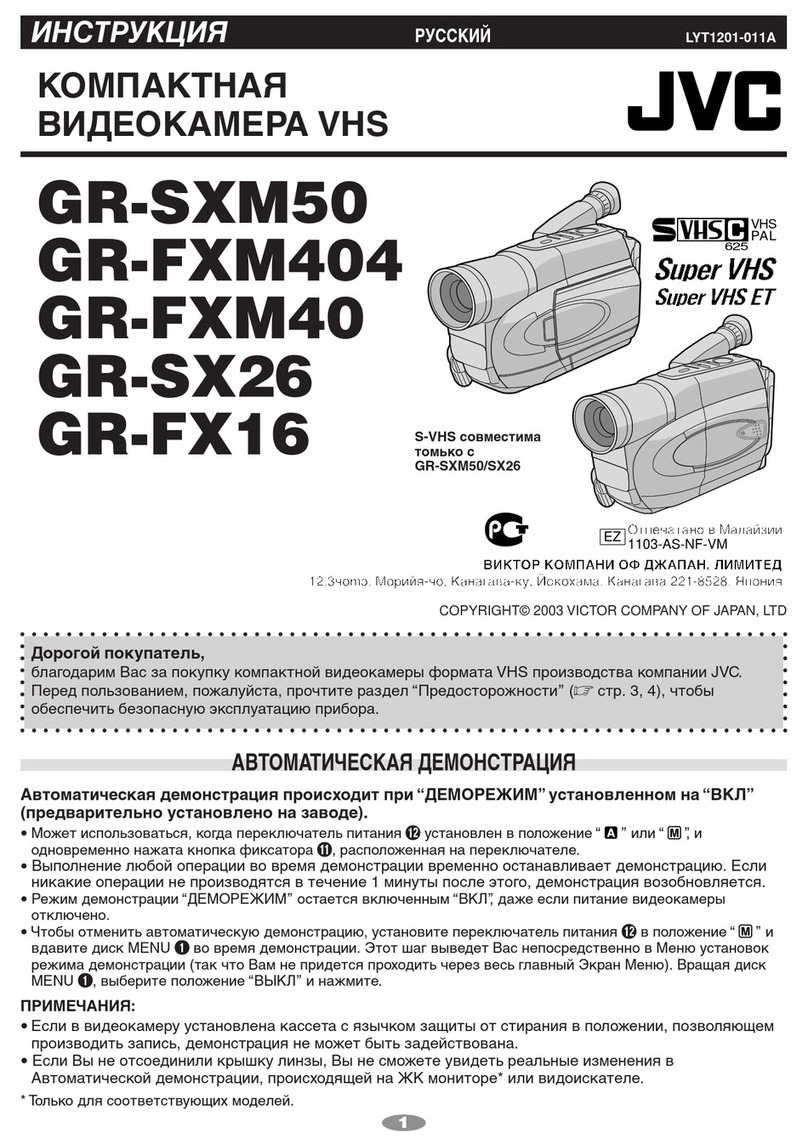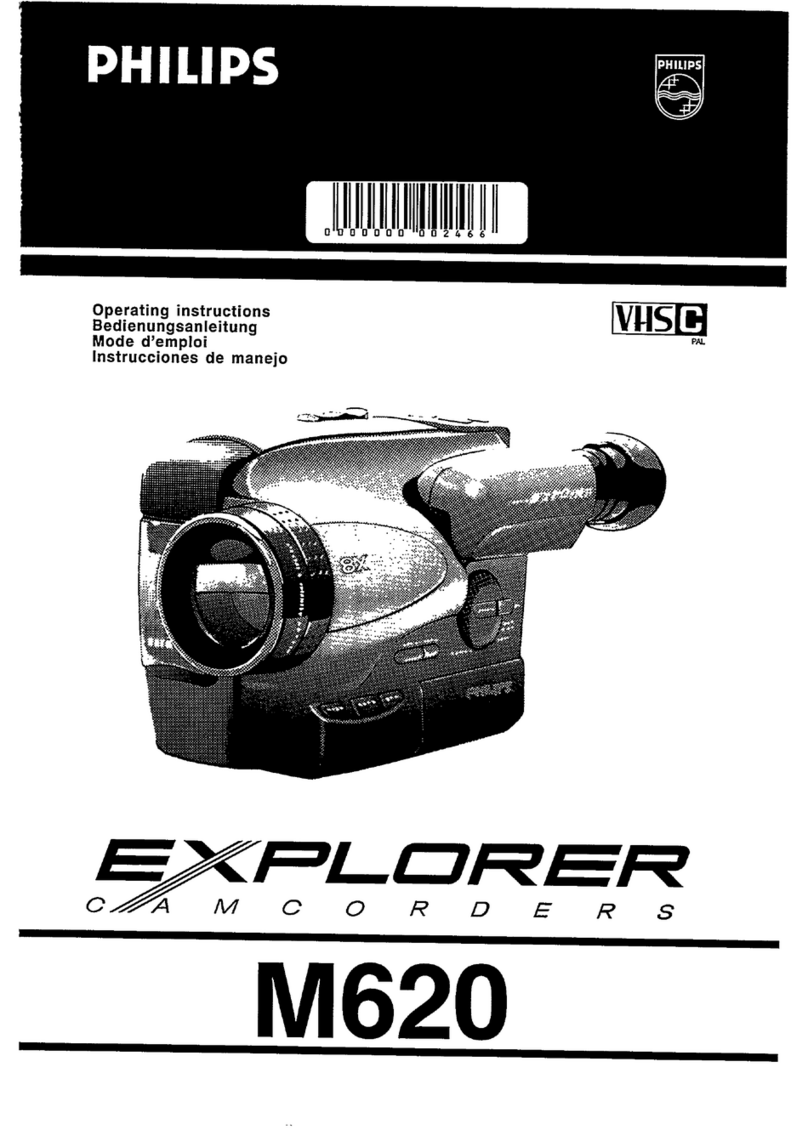SECTION 2
CIRCUIT DESCRIPTION
Refer to the block diagram on page 2-7 and the
schematic diagram on page 9-15.
2-1. VIDEO CIRCUITS
Video information is recorded on the tape in the
form of afrequency-modulated carrier. The video
circuits on the VI and V2 Boards process the video
signal during record and playback operations.
In the record mode the video input is supplied to the
V2 Board, where it is gain-controlled automatically,
clamped, pre-emphasized, white-clipped, dark-clipped,
fm modulated, and supplied to the record amplifier.
The video output signal from the record amplifier
is supplied to the video heads through the slip rings
and is recorded on the tape.
In the playback mode the recorded signals from the
rotary heads are fed to the playback preamplifier
on the V2 Board. The amplified video outputs are
mixed together and these continuous fm signals are
fed to the VI Board.
The circuits located on the VI Board include a
limiter, differentiator, rectifier and demodulator. The
video output from the VI Board is areproduction
of the original video signal.
Video Input
PIN 4of the TV (8-pin) jack for TV recording.
PIN 1of the CAMERA (6-pin) jack for camera
recording.
UHF connector for LINE (auxiliary) video input.
Video Amplifiers andAGC-QlOl to Q104
The incoming video signal is supplied to the first
video amplifier Q102 through apre-emphasis circuit
consisting of R101 and CI 01. The input signal level
for Q102 is controlled by AGC amplifier Q101
(FET), without manual video level control. Q102
and Q103 amplify the video signal and feed it to
Q104. Asample of the video signal at the emitter
of Q104 is fed to the peak detector consisting of
CI 08, D101, and D102. The output of the rectifier
is apositive dc voltage that is proportional to the
peak white component of the video signal. This dc
voltage controls the conduction of AGC amplifier
Q101 and this controls the amount "of input signal
to Q102. R101 and C101 accomplish pre-emphasis so
that the AGC circuit is effective for high frequency
signals.
Low Pass Filter-L102, L103, CI 13
The low-pass filter rejects the video signals at the
high end of the band, such as the 3.58 MHz color
subcarrier and the 4.5 MHz audio i-f signal.
Deviation Setting and Clamp-Q105, R121, D103,
R126
The output of the low pass filter is supplied to
Q105 through R121.
Rl 21sets the video signal level to Q105 so that the
following fm modulator produces an fm signal of 1.4
MHz deviation, from 3.2 MHz to 4.6 MHz. D103
clamps the sync tip of the composite video signal
to the reference voltage picked off at the arm of
R126. This reference voltage sets the sync tip (or no-
signal) frequency of the fm modulator. R126 is set to
establish the sync tip carrier frequency of 3.2 MHz.
Pre-emphasis and amplifiers-Ql 06, Q107, Rl30,
R131, C118
The dc clamped video signal is applied through
Q106 to the pre-emphasis circuit consisting of R130,
R131, and CI 18 to improve the signal-to-noise ratio
of the video information, and then to grounded-base
amplifier Q107. Base-bias voltage for Q107 is sup-
plied from the arm of R126.
White Clipper, Dark Clipper, and Mod. Driver-
Q1Q8, D104yR137, D107, R155
The pre-emphasized video signal contains over-
shoot in both the positive and negative directions.
D104 limits the maximum positive signal (wkite
peaks) of Q107 to the voltage picked off at the arm
of R137. D107 clips negative spikes. Video from
D104 is fed to the modulator through modulator
driver Q108.
Modulator~Q109, QUO
The modulator is afree-running symmetrical
multivibrator. Frequency control is achieved "fcy
returning both bases to the low-impedance source
of modulating voltage-the emitter of QlOS-
through R140. Frequency varies from the tip-
of-sync value of 3.2 MHz to amaximum 4.6 MHz
for peak white signals. R148 and CI 22 are adjusted
to obtain asymmetrical output waveform (equal
pulse durations and slopes for each half cycle).
Waveform symmetry is important as it determines
2-1
